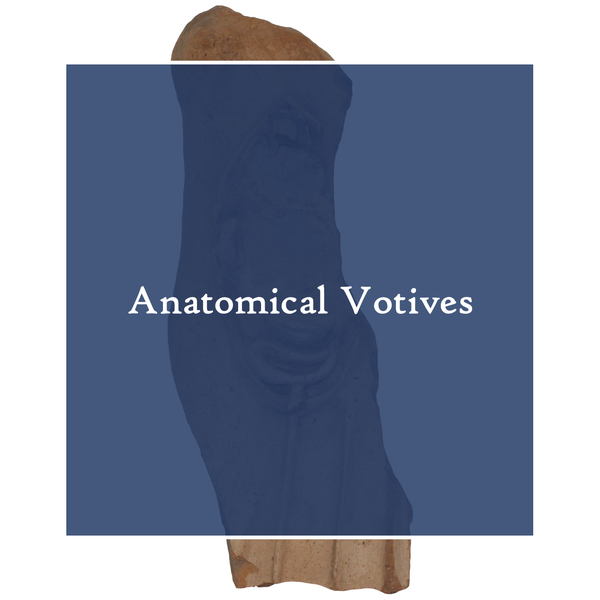Anatomical Votives
The Anatomical Votives of the Stieda Collection
Ludwig Stieda was born in Riga to a merchant family. He studied medicine and earned various awards during his studies, including accolades for his anatomical research. After receiving his doctorate in 1861, he furthered his education in Giessen, Vienna, and Erlangen, before teaching anatomy in Dorpat (now Tartu). In 1885, he became a full professor and director of the Anatomical Institute in Königsberg. He returned to Giessen in 1912 and passed away there in 1918 on his 81st birthday. Stieda's friendship with the classical philologist Alfred Körte was pivotal in his decision to travel to Italy in 1899 to study Etruscan votives. During this trip, he acquired numerous anatomical votives in Isola Farnese, which he donated to the Collection of Classical Antiquities in 1913. The collection originally comprised about 60 objects, although some were lost after World War II. Approximately 40 pieces have been preserved, and a representative selection is displayed in the permanent exhibition. |
|
|
The Site The Etruscan city of Veji is situated on a plateau about 15 km northwest of Rome, near the modern village of Isola Farnese. The earliest finds indicate that the area was settled during the Late Bronze Age. The town of Veji itself shows evidence of early settlement from the so-called Villanova period (9th/8th century BC). From the 6th century BC onwards, Veji became very wealthy, primarily due to salt production. The city boasted several public buildings, temples, and sanctuary precincts. However, ongoing conflicts with Rome, culminating in its defeat by the Romans in 396 BC, marked the end of this advanced Italic civilization. Despite this, archaeological evidence shows that the area remained inhabited until Hellenistic times. The body part votives, which date from the end of the 4th century to the middle of the 3rd century BC, and some pieces from the 2nd century BC, were discovered in the area of the sanctuary (specifically from the Pendici depot in the Piazza d'Armi).
|
The Votives In addition to figural representations interpreted as young infants, the collection includes various body parts such as heads, extremities, eyes, ears, male sexual organs, and internal organs. Some of these organs can be identified with reasonable certainty, such as a uterus, while others are more challenging to identify or have been interpreted in different ways. For example, some stylized objects have been interpreted both as hearts and as sacrificial cakes. A notable feature of the collection is the visceral panels, which depict internal organs in combination, and partially clothed torsos that provide a window-like view into the body's interior through an opening. Researchers have debated the function of such offerings, which are also found in similar forms in other regions, from Gaul to Greece and Cyprus. Interpretations range from requests for the well-being and recovery of the dedicatee and their family to expressions of gratitude to a deity for a favor received. Contrary to earlier assumptions, however, these objects do not show indications of pathological changes in the body parts. |

